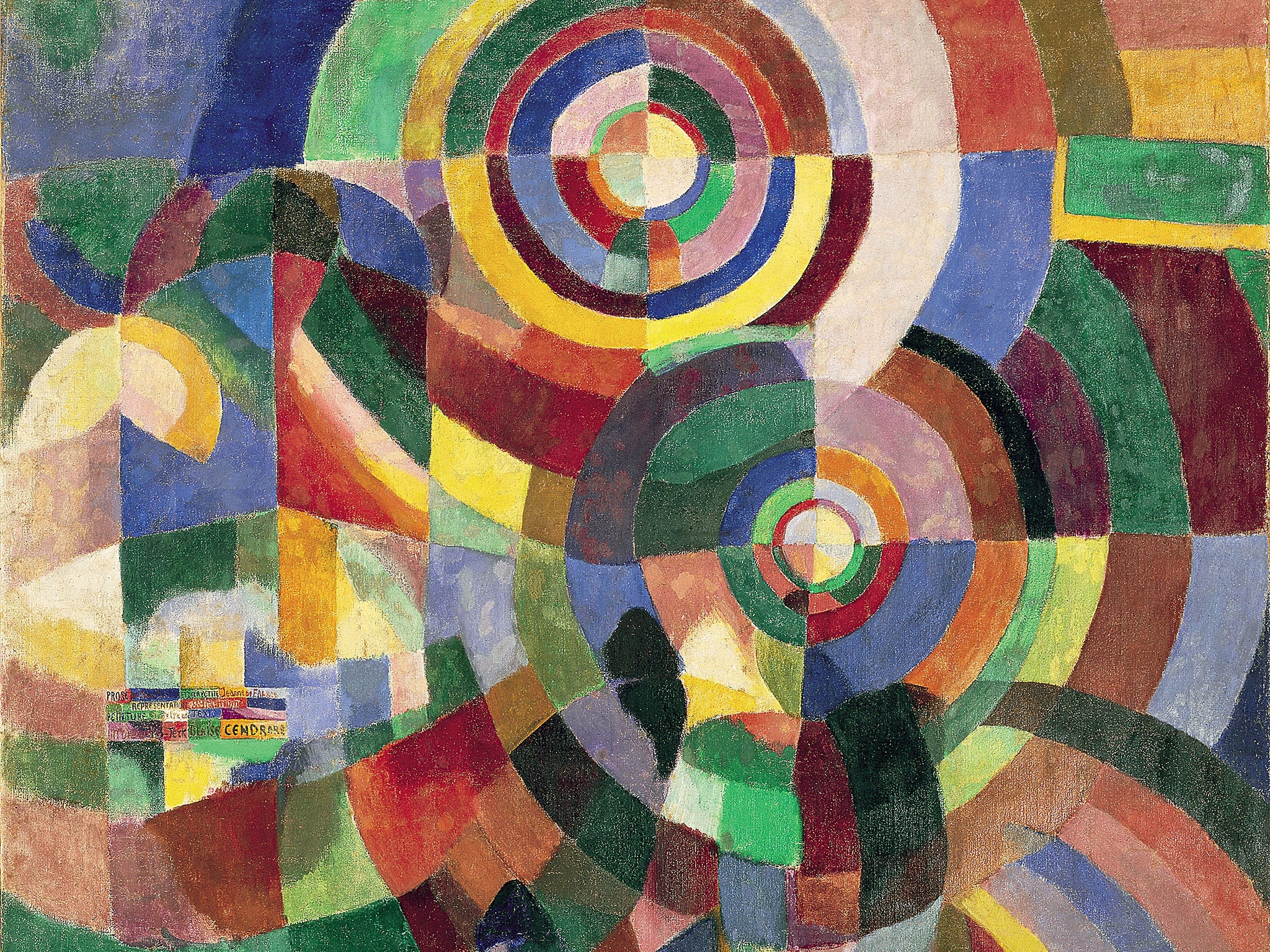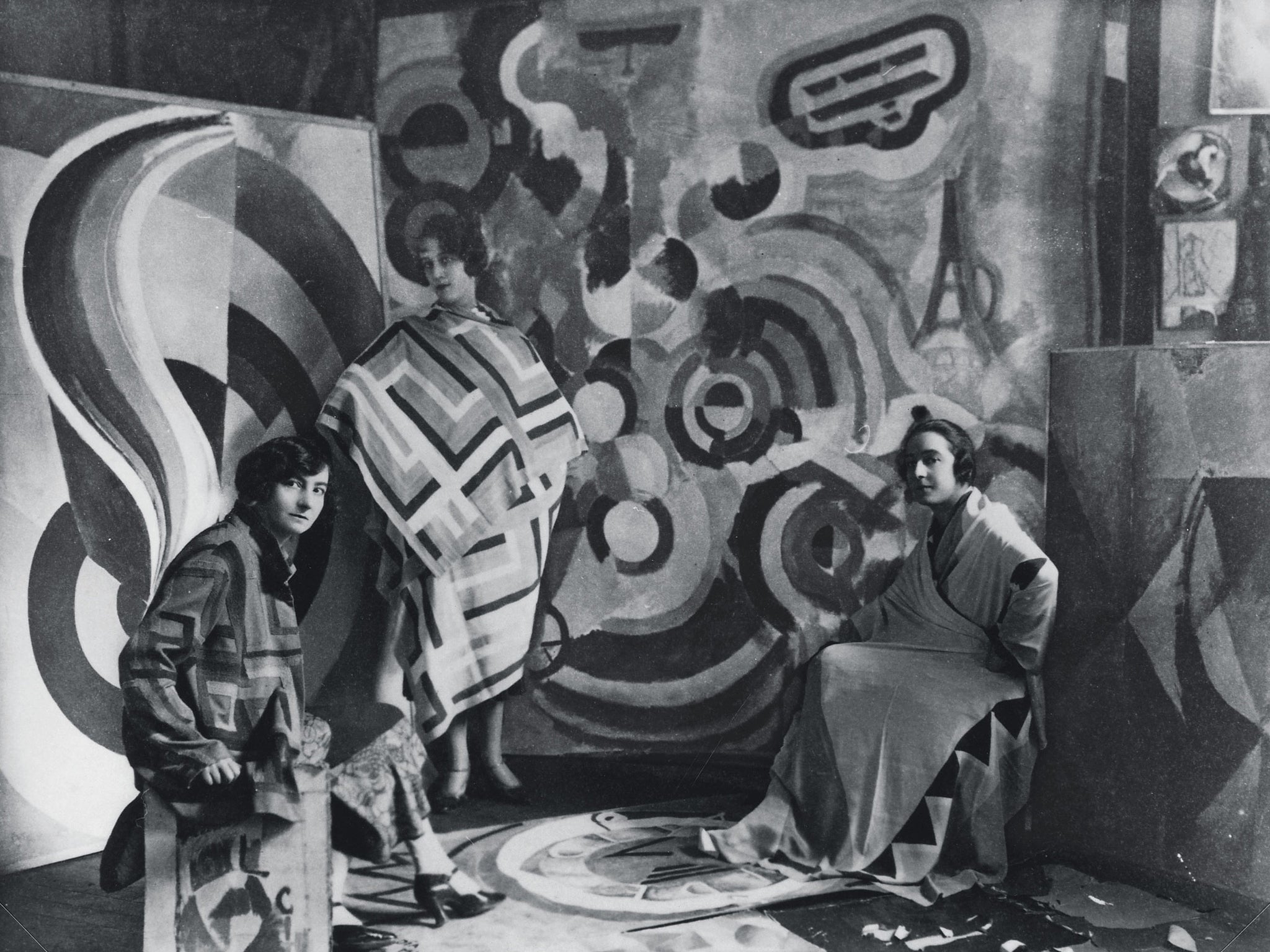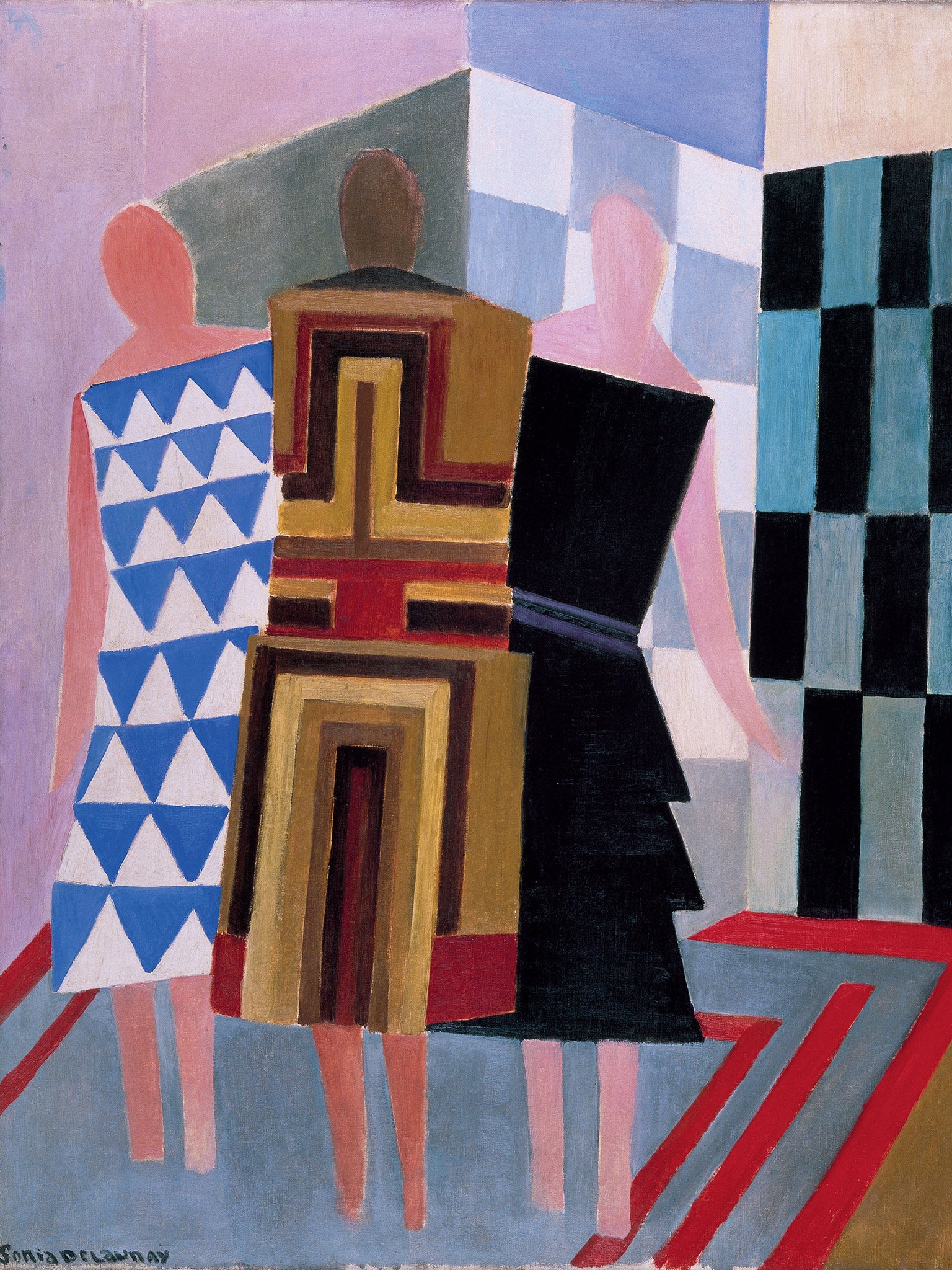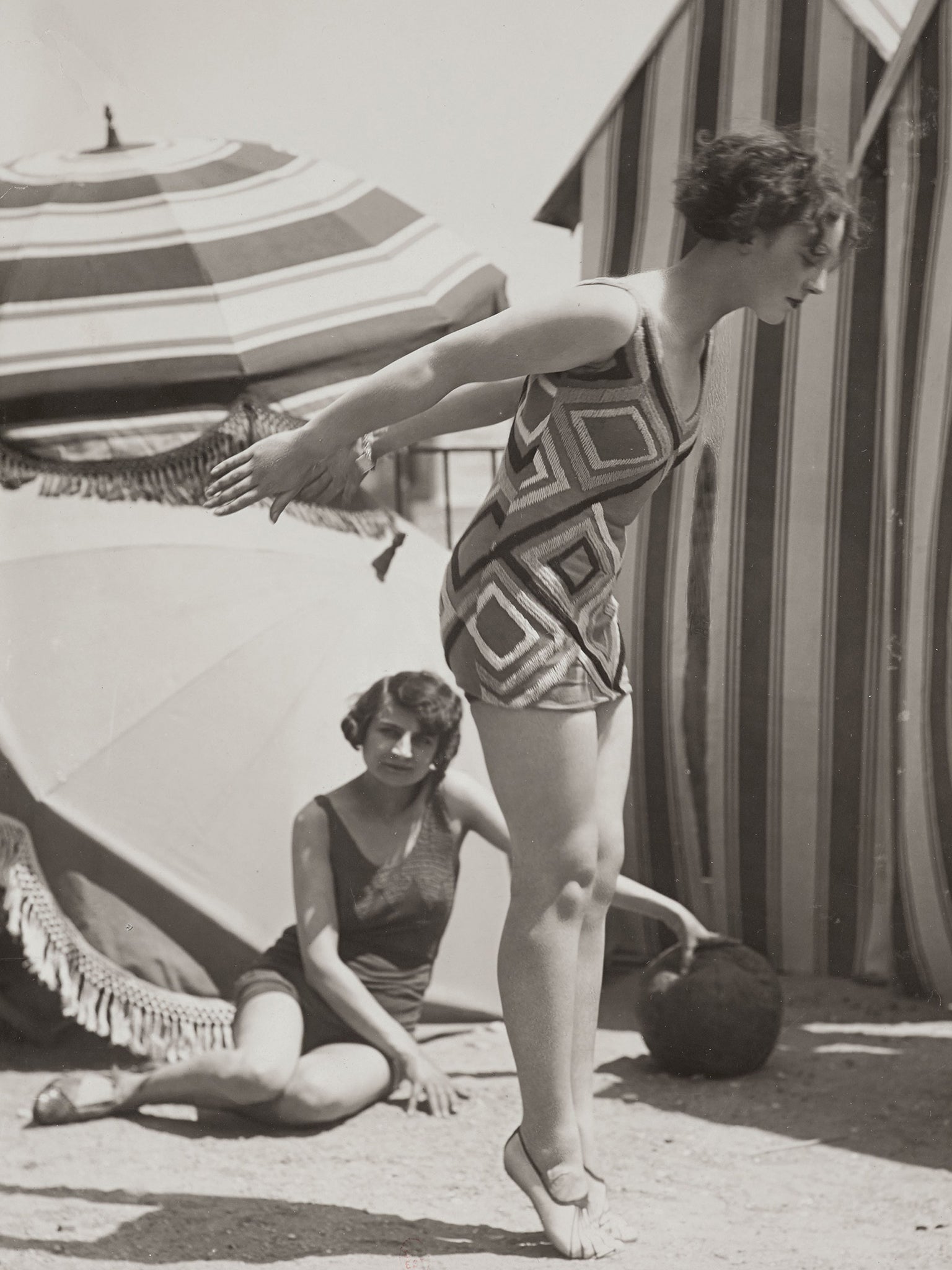Sonia Delaunay retrospective: Tate Modern's new show gives the genre-busting artist her due
The exhibition celebrates the entire range of Delaunay’s medium-crossing work

There has long been an uncomfortable and gendered separation in art history between highbrow “fine art” and “decorative art” – those things deemed feminine and therefore merely pretty.
This prejudice shows clearly in the treatment of Sonia Delaunay. A crucial figure in modernist art, she has nevertheless been relegated over the years to the position of second-most-significant Delaunay – after her husband, abstract painter Robert Delaunay. Sonia also painted bright, bold abstract works, but her oeuvre, to her critical detriment, extended far wider, into fashion, furniture and illustration.
Now, however, she is to receive her due with a major retrospective, which arrives at Tate Modern this month after a successful opening at the Musée d’Art Moderne in Paris, where I went earlier this year for a preview. It’s an exhibition explicit in its aim to celebrate the entire range of Delaunay’s work; visitors are likely to get as much joy from peering at her vivid embroideries as soaking up her huge, circular-patterned canvases.
Sonia was born Sara Elievna Stern in Odessa in Ukraine in 1885, but raised by her aunt and uncle in Russia, in a cultured Jewish milieu. She adopted their surname and a Russian forename: Sonia Terk. An intellectually precocious and fiery young woman, she studied art in Germany before moving to Paris in 1906. Her heart immediately captured by the city, she embarked on another love affair there – with pioneering Robert, whom she married in 1910.

“Before meeting Robert, Sonia was a painter – she exhibited among the most modern painters in Paris,” explains the Paris exhibition’s co-curator Cécile Godefroy. “As soon as she met him, she stopped painting, [so as] not to enter into competition with her future husband. And she came back to needlework and embroidery, which she had learnt to do when she was young in Russia.” “How depressing! How conventional!” it is tempting to cry. But, the curators suggest, this wasn’t the result of Robert’s oppressive sway – it was a decision based on love and their desire to pursue parallel, rather than competitive, artistic paths.
And anyway, Sonia did not see applied arts as secondary. Looking at her embroideries and patchworks from the 1910s, one could hardly say she was constrained by the move to needlework. “It’s not conventional at all; it’s a very dynamic manner,” says Godefroy. “It’s feminine, but very modern.”
Sonia and Robert were a team, a power couple who hosted salons for the Parisian avant-garde and duly launched their own movement, Simultanéisme, which valorised compositions of contrasting colours. While Robert juxtaposed vibrant hues in his painting, Sonia turned their apartment into a Simultaneous showcase, blasting colour across everything from lampshades to cushions and even her own body, launching the clothing label Simultane.
Her easel wasn’t consigned to the scrapheap, though, and the curators are keen to show that throughout her career, fine and decorative arts were intertwined. But such eclecticism saw her devalued: in 1913, for example, Sonia and Robert exhibited together at a German show, and while it featured five of her paintings, there were also her book bindings, cushions, painted boxes and cups. The critics were not impressed that such domestic objects should be presented as “art”; one snootily dismissed the work as having “at best, no more than decorative value”.

“At this particular moment she started to be considered not as a painter, but as a decorative artist,” says Godefroy. “And it lasted almost all the century. She was categorised in a medium which was not considered as important as painting.” This disparagement of her work continued after the Second World War, when an “anti-feminist” current dovetailed with a move to legitimise and canonise abstract art, which resulted in the marginalisation of artists working outside painting. Though Robert died in 1941, Sonia was in his shadow until her death in 1979: “For a long time, people think of Sonia as Sonia-and-Robert. So what we wanted to do is present Sonia alone… An important part of her work is before and after Robert,” says Anne Montfort, co-curator of the Paris exhibition.
One of the ways the curators are re-approaching Delaunay is as a proto-performance artist. Dressing up, explains Tate Modern curator Juliet Bingham, had been important to Sonia from her earliest years. And there are hundreds of photographs – mostly black and white, alas – of Sonia and her friends dressed up splendidly in her zany, patterned clothes. She made many costumes for films and performances, including for Tristan Tzara’s Dadaist play Le Coeur à gaz (1923) and for Diaghilev’s Ballets Russes: her designs for the latter’s production Cléopatre (1918) are eye-popping.
But it appears that Sonia treated her whole world as a stage. She invited Dadaist friends to help decorate another apartment as a dramatic backdrop for her Simultaneous silks to shimmy though. When she wore her colourful, patchwork Simultaneous dress at a ball in 1913, Robert called her “a living sculpture” – but she also painted the ball itself, in her abstract masterpiece Le Bal Bullier. Living, and working, simultaneously, “Sonia herself is part of her work… This was a kind of performance,” says Montfort. “To become a living painting is the kind of statement you don’t have a lot in contemporary art at the time, except with the Futurists.”

This proto-performance art wasn’t just a matter of creative impulse: it was also canny self-promotion Sonia was a successful entrepreneur: she opened numerous boutiques and collaborated on fabrics with Metz & Co., a Dutch department store, from 1925. Sharing Simultaneous dressing in public was part of her sales plan; she hoped that “liberated women …. [in] dress-poems would fill the street”. And when, with the Russian Revolution in 1917, Sonia’s family properties were seized by the Bolsheviks, making money became rather more pressing. Flogging high-end fashion provided a steadier income than painting, and she became an international retail success, with fans of her Roaring Twenties garb including Gloria Swanson and Nancy Cunard.
Here was a woman ahead of her time, with an understanding of the artist as brand. “She always wanted to promote herself,” says Godefroy. “She was a kind of a complete artist: here is the artist, dressed by herself, in front of fabric designed by herself, or a painting by herself!”
She maintained that energy throughout, working hard to promote Robert’s paintings after his death, while continuing her gleefully promiscuous approach to different media well into her eighties and nineties. The self-promotion continued too: at 83, when appearing on the talk show Les Quatre Temps with the singer Françoise Hardy, she had the set decorated with wallpaper based on her own gouaches… Sonia was, says Godefroy, continuing her “synthesis of the arts until the very end”.
Tate Modern, 15 April to 9 August; tate.org.uk
Join our commenting forum
Join thought-provoking conversations, follow other Independent readers and see their replies
Comments